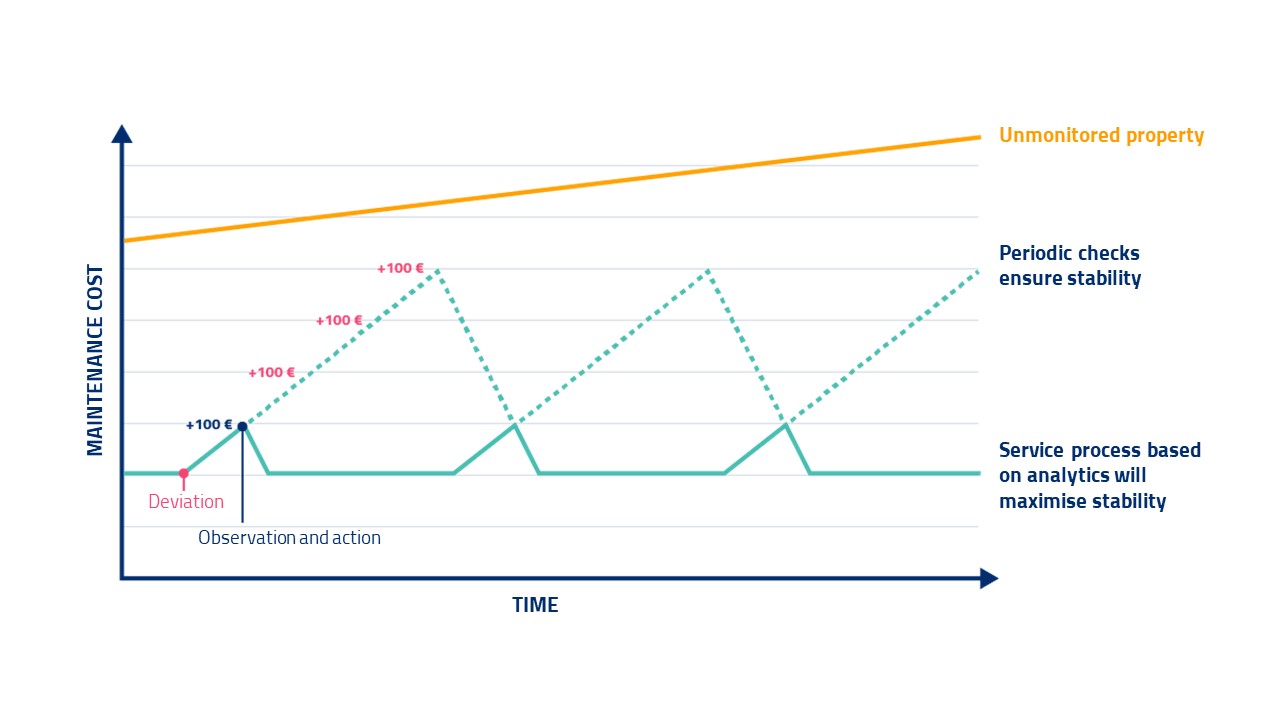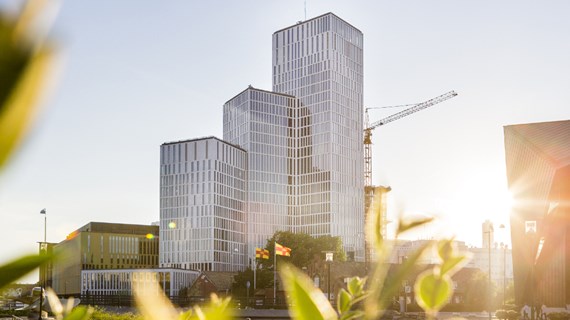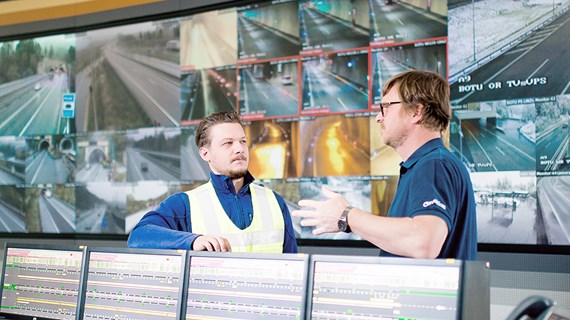
What happens when you combine artificial intelligence with human intelligence?
Artificial intelligence solutions are becoming common in optimising the operation of buildings. But so far, the collaboration between AI and human intelligence has not been entirely frictionless. What can be achieved by combining the strengths of AI and human experts?
The digitalisation of real estate has been talked about for a long time. But many people are still unclear about what it means in practice. Especially for those who are not in daily contact with real estate and its technology. But there are a few very good reasons to be interested: emissions, indoor conditions and money.
The basic problem is this: if a building is not monitored and properly maintained, its energy consumption will gradually increase. Technical equipment and materials age and wear out, leading to a deterioration in their performance. As a result, the running costs and carbon dioxide emissions of the building increase. The same technology could achieve the same conditions with fewer emissions, so the extra consumption is completely unnecessary.
Get rid of the futility: a brief history of digitalisation in real estate
Digitalisation has provided us with tools to better understand why energy consumption is increasing. Advanced building automation and sensors allow us to detect equipment failures in more detail or identify when they are under- or over-utilised. This provides a wealth of data that can be used to optimise the operation of the building.
“It may have caused additional energy consumption for several months.”
Of course, someone has to turn the data into action to make it useful. Traditionally, the problem has been solved by periodic surveys and analyses. For example, every quarter, you look at the property data and see what has changed since the last time.
For instance, an inspection may reveal that the heat recovery unit of one of the ventilation units has broken down. Even if this has not directly affected the conditions of the property, it may have caused additional energy consumption for several months.
A service request is made to the service department, after which the fault is repaired. This ensures that, for example, the energy consumption or other parameter on which the property is optimised remains almost the same over time.
The next step forward in digitalisation
In recent years, we have witnessed the next stage in the digital evolution of real estate. You could call this evolutionary step artificial intelligence or analytics. In this case, it refers to essentially the same thing: software that continuously monitors thousands of data points in a property.
Analytics can observe and process much larger amounts of data than a human, allowing for more accurate observations. It generates a label of its observations and then continues to monitor them.
The challenge is that these labels can accumulate in huge numbers if there is no process in place to go through them, evaluate them and add them to a worklist if necessary.
In practice, such a process is lacking in almost all Finnish property owners, for example.
Digitalisation and expertise can now be combined
We have developed a service called Caverion SmartFlow in Finland, in partnership with some of the leading property owners, which combines the best of digital systems and expert work. The aim of the service is to ensure that the goals property owners set for their properties are actually achieved. Property operations are optimised and the property is maintained when it really needs it - not when the calendar says so.
“The property is maintained when it really needs it - not when the calendar says so.”
The service works like this: an artificial intelligence solution continuously monitors the property's data. Its findings are transmitted around the clock to the on-duty property manager. First responders at the control room can resolve most of the analytics findings. If necessary, they can, for example, adjust settings or order maintenance. This prevents the ticket stack from growing.
Findings that require more specific expertise, such as energy or automation, are passed directly to the right expert in the next phase of the service. If necessary, a final step can be to visit the site, for example to carry out a more extensive survey.
This can lead to a situation where very few findings are left when the building's technology is working optimally.
The best outcome for both the property owner and the environment
Next winter, we may have to wonder again about the price of energy. Cost savings are of course an important reason to move to an approach that combines digital solutions with expert work, but it's also worth looking at the bigger picture.
Energy consumption in buildings is a significant part of total energy consumption, up to 40%. By reducing unnecessary energy consumption in buildings, we can fight the climate crisis without affecting anyone's daily life.
Got interested? Leave us a contact request.
This blog article was originally written in Finnish by Ville Viherä, Development Manager in Caverion Finland. The blog article was published in caverion.fi.



